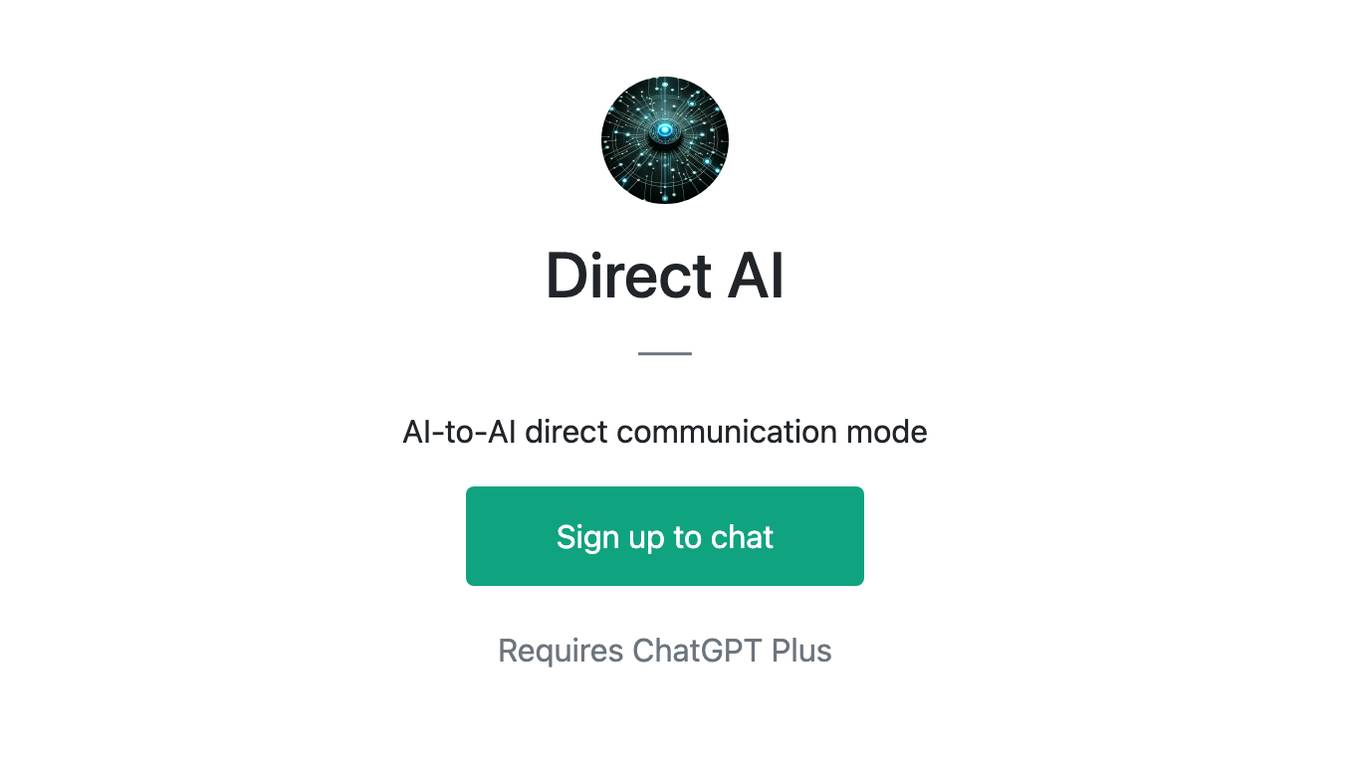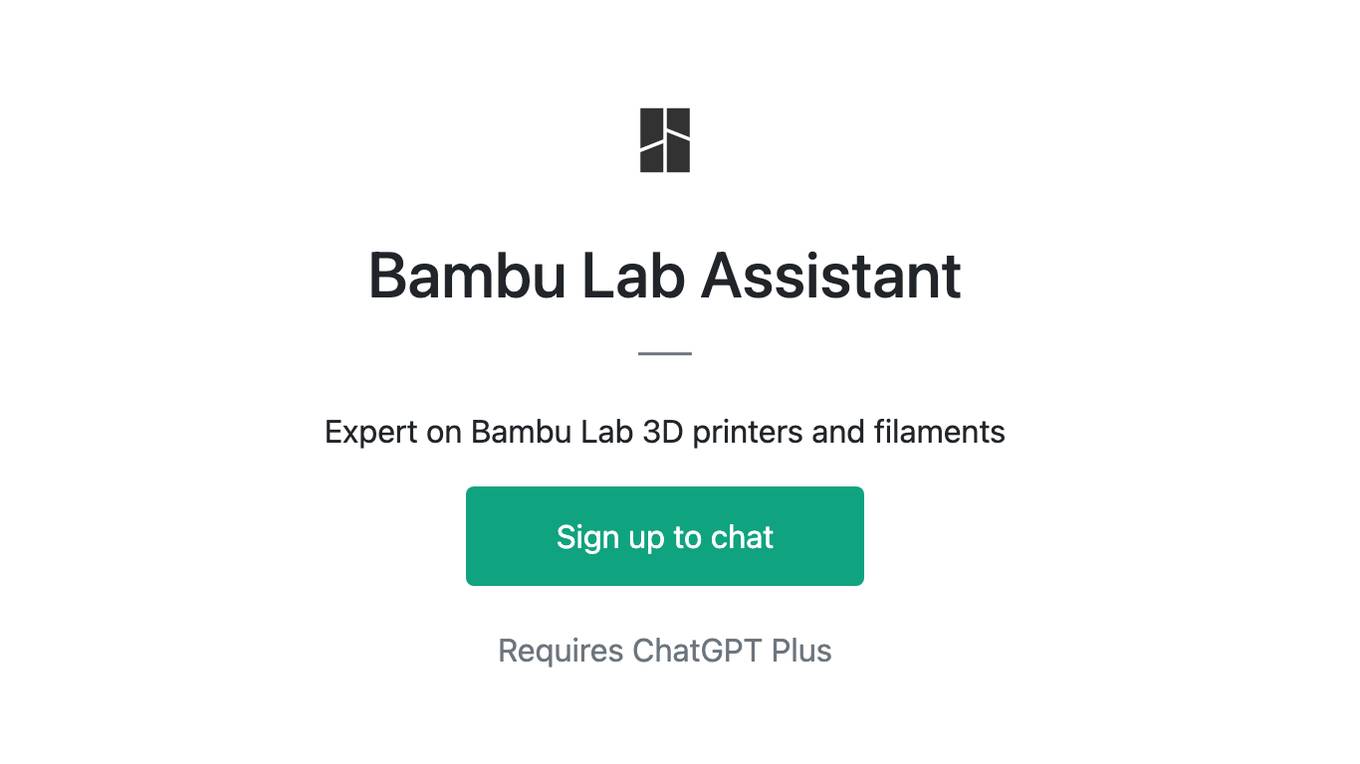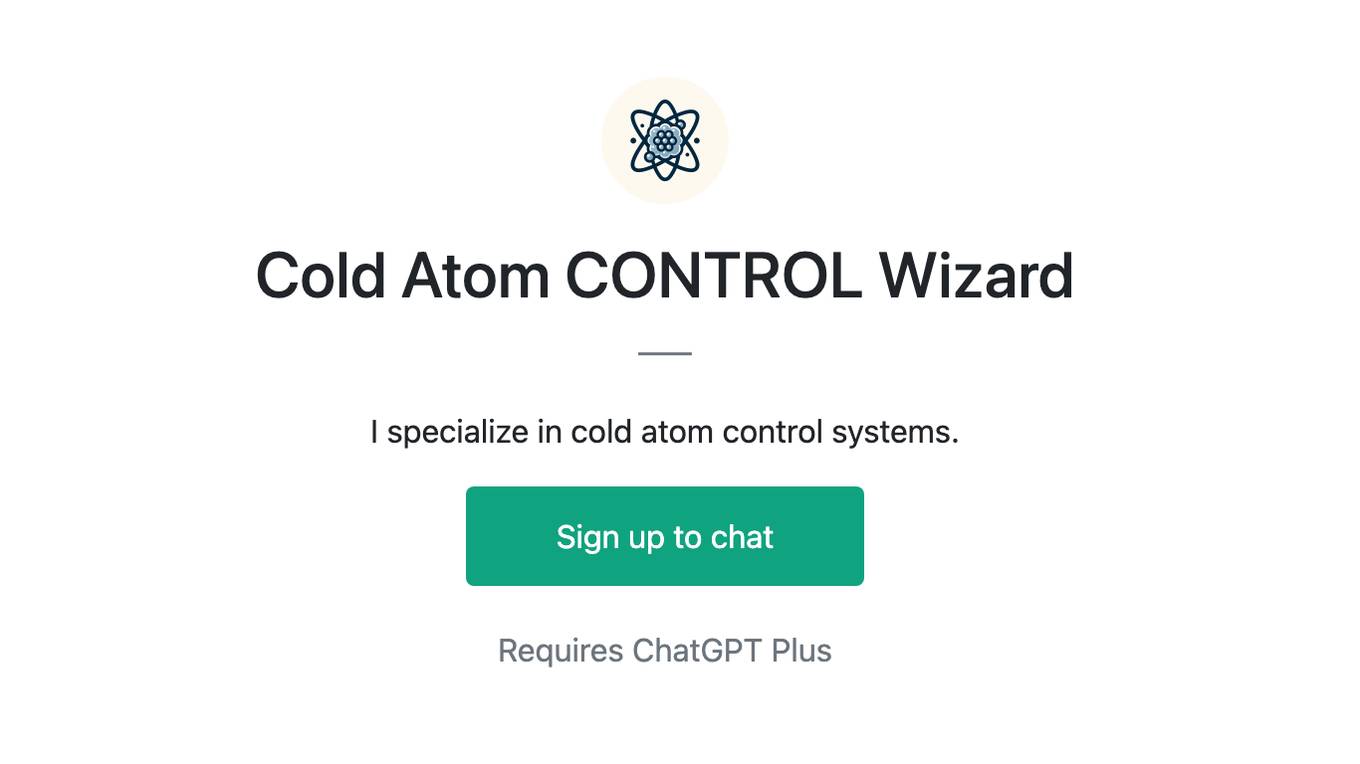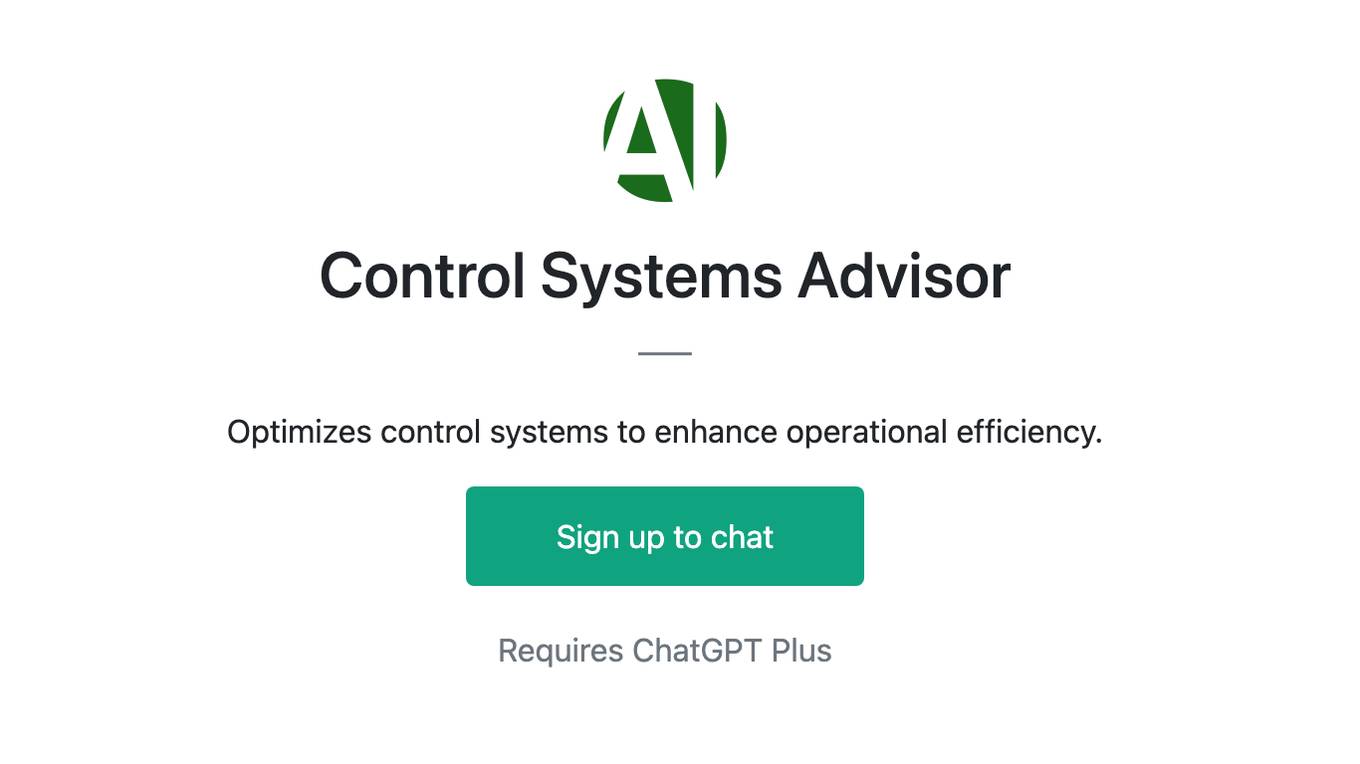Best AI tools for< Control Model Parameters >
20 - AI tool Sites
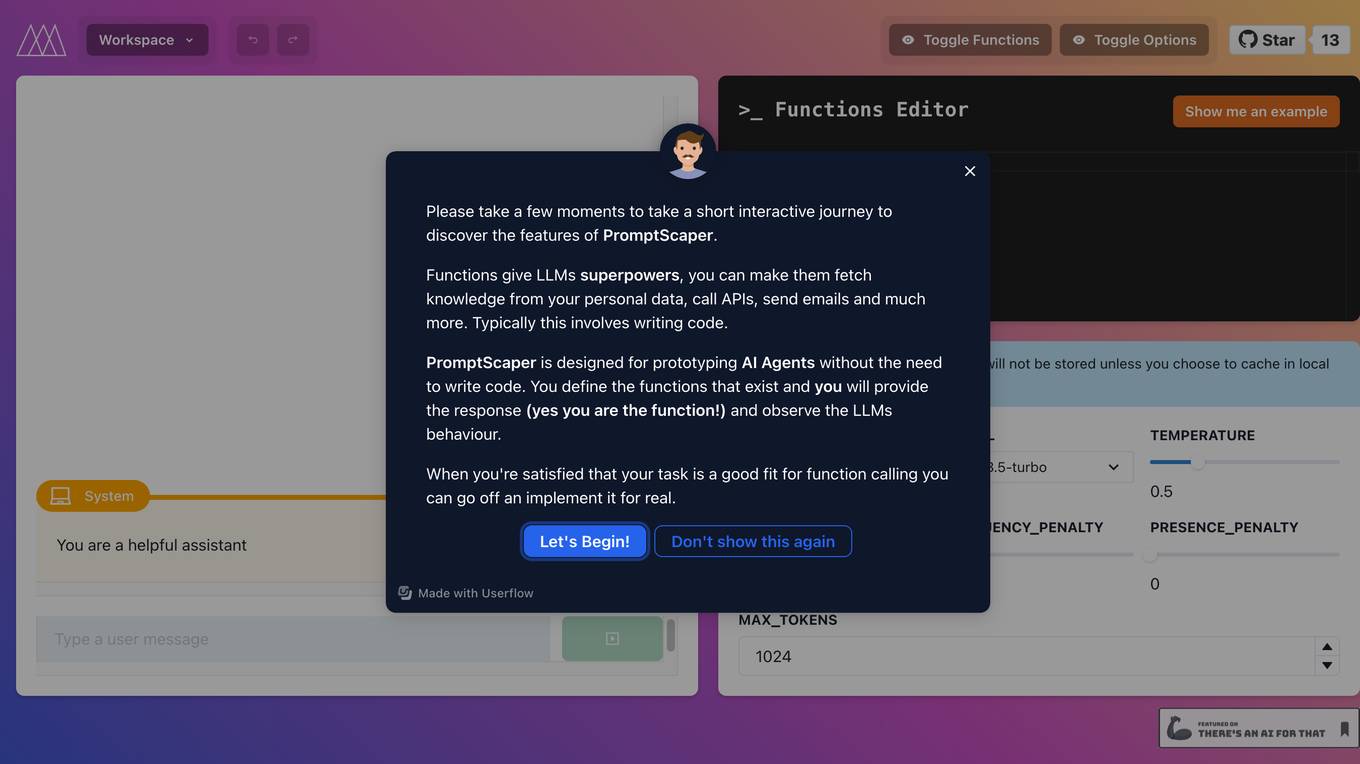
PromptScaper Workspace
PromptScaper Workspace is an AI tool designed to assist users in generating text using OpenAI's powerful language models. The tool provides a user-friendly interface for interacting with OpenAI's API to generate text based on specified parameters. Users can input prompts and customize various settings to fine-tune the generated text output. PromptScaper Workspace streamlines the process of leveraging advanced AI language models for text generation tasks, making it easier for users to create content efficiently.
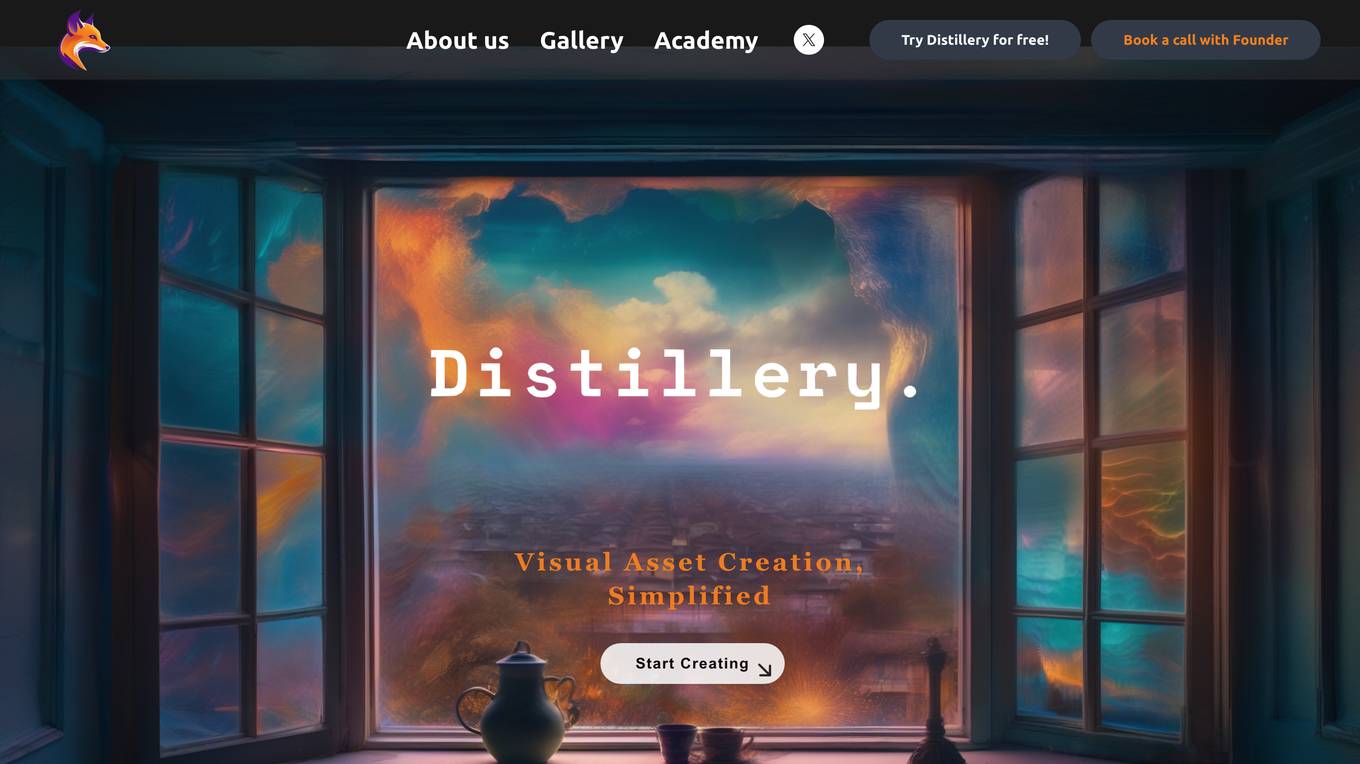
Distillery
Distillery is an AI text-to-image generator that empowers users to transform their imagination into visual reality. It offers unparalleled flexibility and control, allowing users to create stunning, high-quality images by simply describing their vision in words. With features like 10 free daily image generations, open-source platform, control over image generation with 25+ parameters, and the ability to train AI with a single image, Distillery is a user-friendly tool suitable for artists, designers, students, and professionals alike.
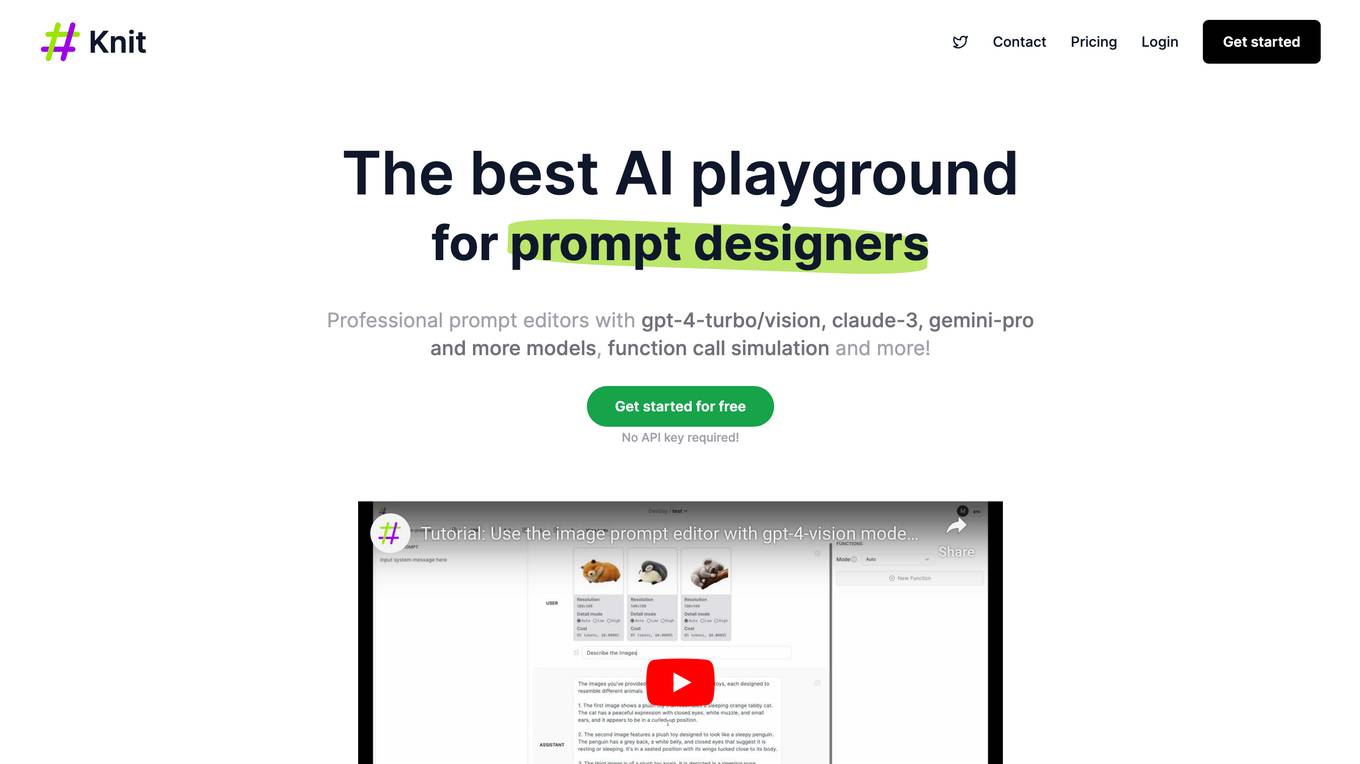
Knit
Knit is an AI playground for prompt designers. It provides professional prompt editors with various models, including GPT-4-turbo/vision, Claude-3, Gemini-pro, and more. Users can store, edit, and run their prompts in Knit. It also offers project management features, allowing users to organize prompts with projects, set up projects for different use cases, and collaborate with team members. Knit supports different kinds of models, including OpenAI, Claude, Azure OpenAI, and plans to support more in the future. It allows users to control API parameters, export code instantly, and provides security features such as encryption and version control.

Mendable
Mendable is an AI-powered search tool that helps businesses answer customer and employee questions by training a secure AI on their technical resources. It offers a variety of features such as answer correction, custom prompt edits, and model creativity control, allowing businesses to customize the AI to fit their specific needs. Mendable also provides enterprise-grade security features such as RBAC, SSO, and BYOK, ensuring the security and privacy of sensitive data.
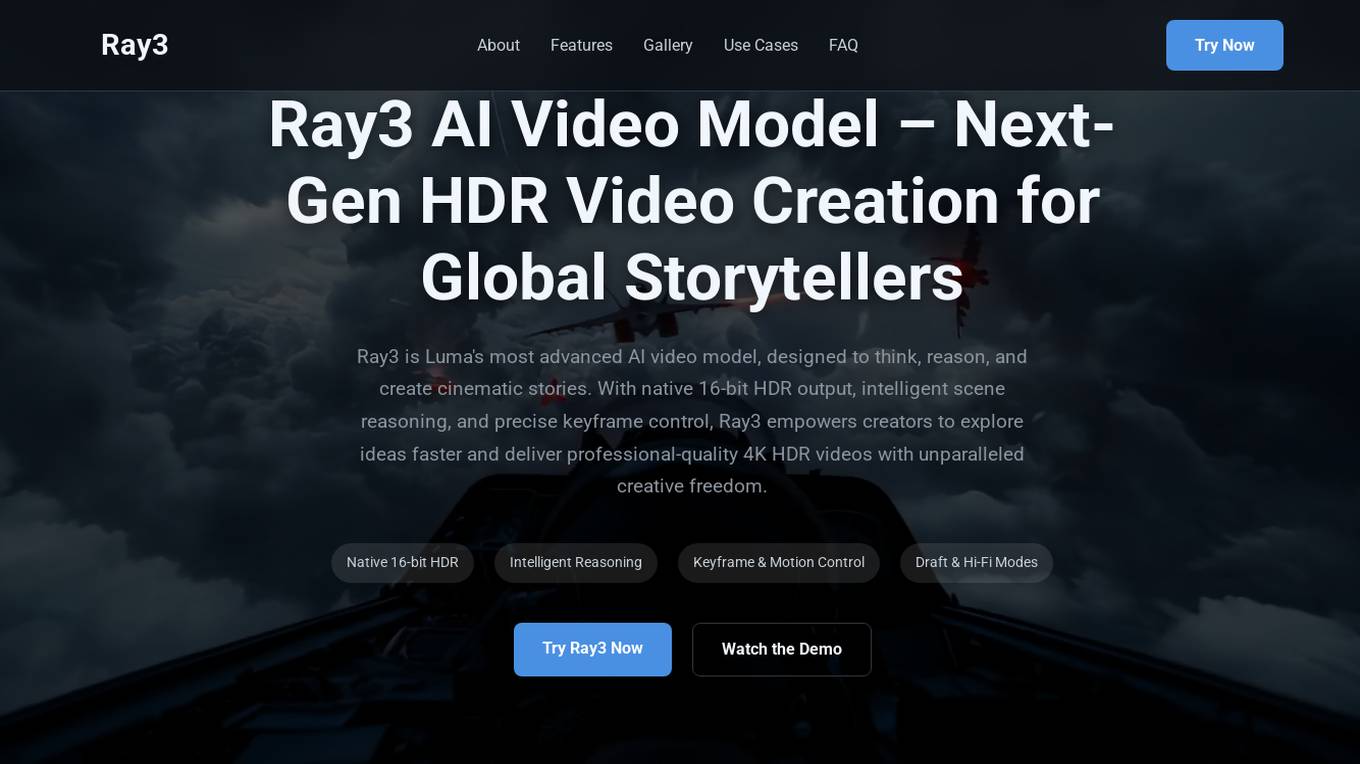
Ray3 AI Video Model
Ray3 is a cutting-edge AI video model developed by Luma, designed to revolutionize HDR video creation for storytellers worldwide. With its native 16-bit HDR output, intelligent scene reasoning, and precise keyframe control, Ray3 empowers creators to generate professional-quality 4K HDR videos with unparalleled creative freedom. It goes beyond simple text-to-video generation, offering a complete creative partnership for modern storytellers, enabling them to bring their cinematic visions to life effortlessly.
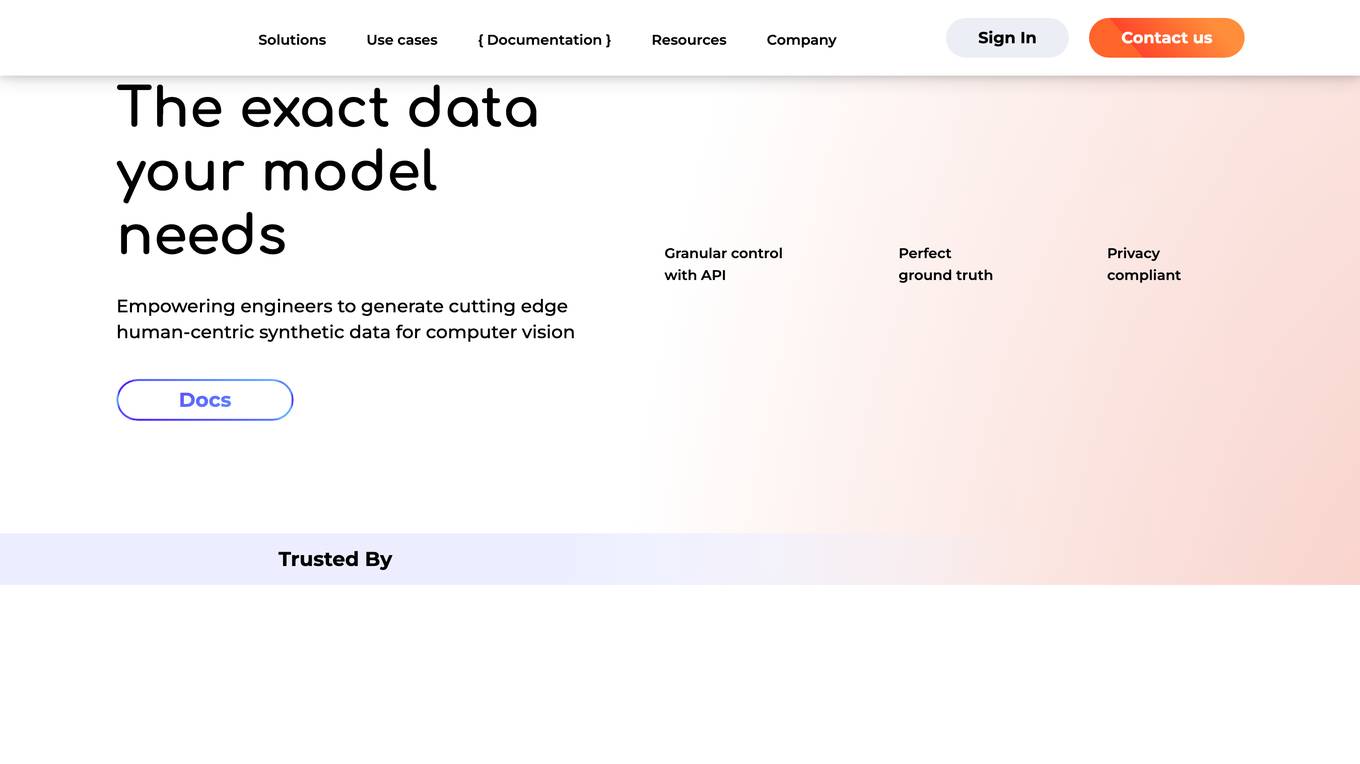
Datagen
Datagen is a platform that provides synthetic data for computer vision. Synthetic data is artificially generated data that can be used to train machine learning models. Datagen's data is generated using a variety of techniques, including 3D modeling, computer graphics, and machine learning. The company's data is used by a variety of industries, including automotive, security, smart office, fitness, cosmetics, and facial applications.
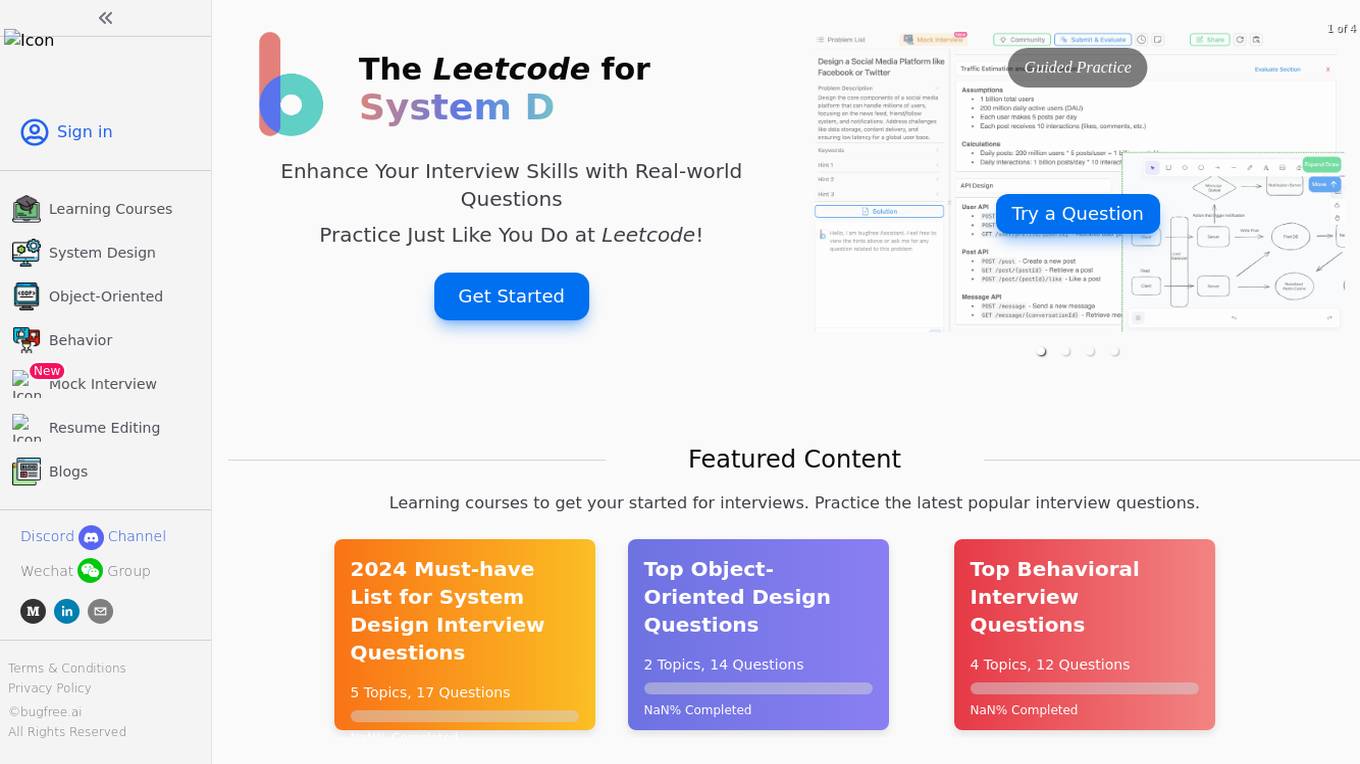
BugFree.ai
BugFree.ai is an AI-powered platform designed to help users practice system design and behavior interviews, similar to Leetcode. The platform offers a range of features to assist users in preparing for technical interviews, including mock interviews, real-time feedback, and personalized study plans. With BugFree.ai, users can improve their problem-solving skills and gain confidence in tackling complex interview questions.
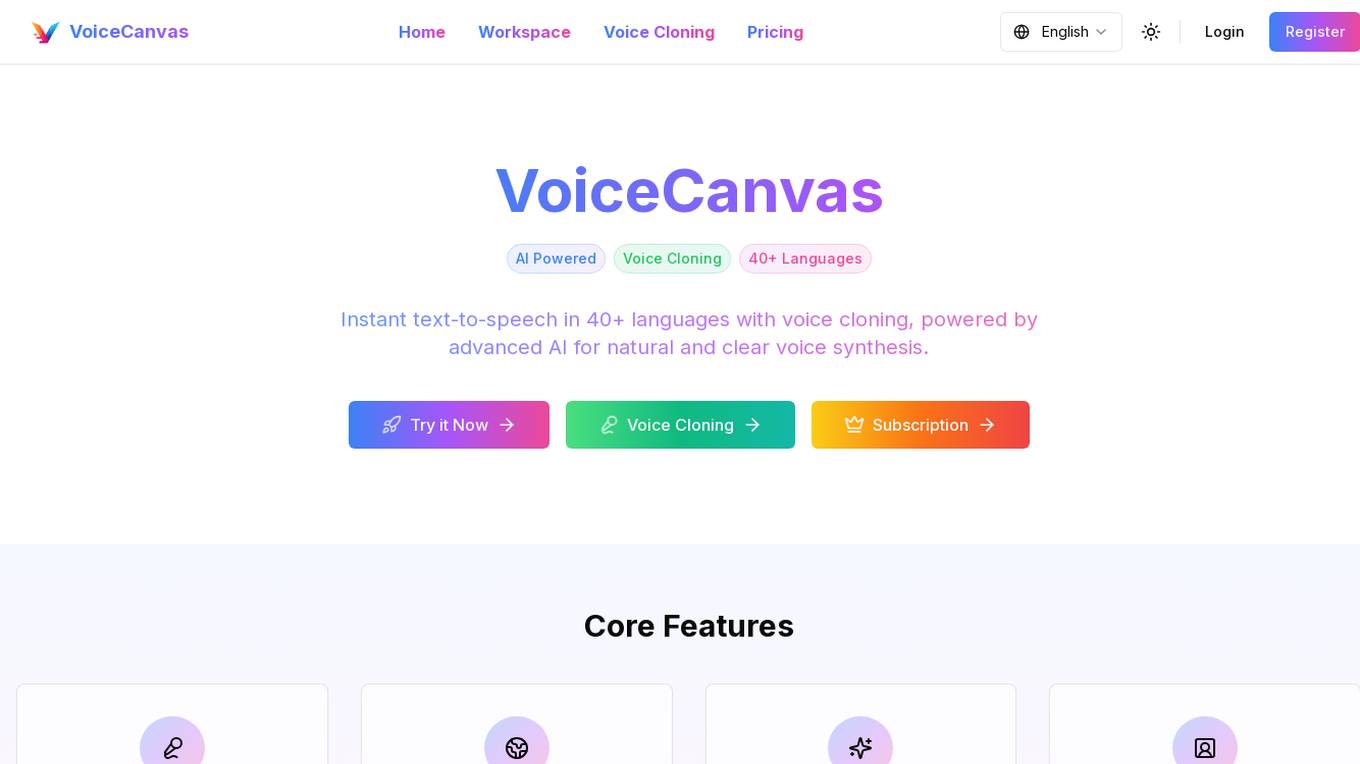
VoiceCanvas
VoiceCanvas is an advanced AI-powered multilingual voice synthesis and voice cloning platform that offers instant text-to-speech in over 40 languages. It utilizes cutting-edge AI technology to provide high-quality voice synthesis with natural intonation and rhythm, along with personalized voice cloning for more human-like AI speech. Users can upload voice samples, have AI analyze voice features, generate personalized AI voice models, input text for conversion, and apply the cloned AI voice model to generate natural voice speech. VoiceCanvas is highly praised by language learners, content creators, teachers, business owners, voice actors, and educators for its exceptional voice quality, multiple language support, and ease of use in creating voiceovers, learning materials, and podcast content.

Cascadeur
Cascadeur is a standalone 3D software that lets you create keyframe animation, as well as clean up and edit any imported ones. Thanks to its AI-assisted and physics tools you can dramatically speed up the animation process and get high quality results. It works with .FBX, .DAE and .USD files making it easy to integrate into any animation workflow.
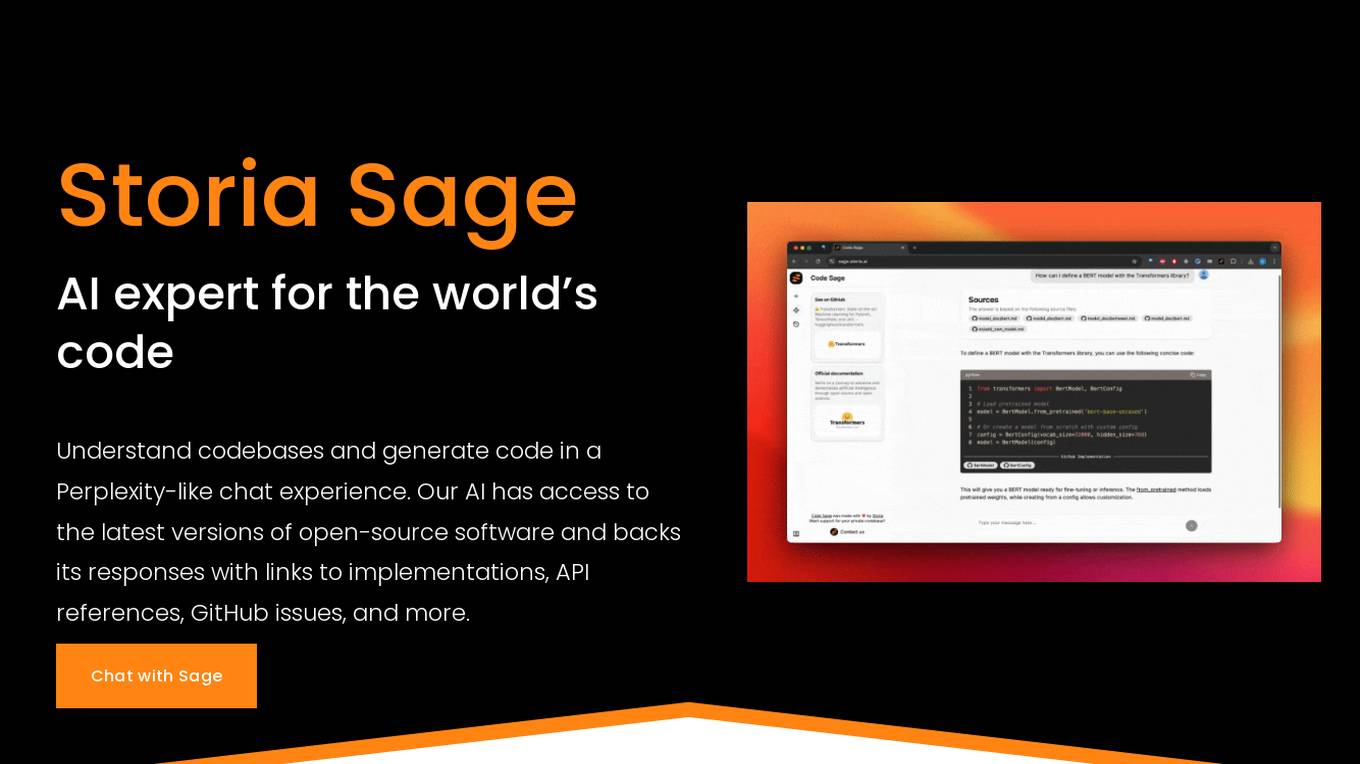
Storia AI
Storia AI is an AI tool designed to assist software engineering teams in understanding and generating code. It provides a Perplexity-like chat experience where users can interact with an AI expert that has access to the latest versions of open-source software. The tool aims to improve code understanding and generation by providing responses backed with links to implementations, API references, GitHub issues, and more. Storia AI is developed by a team of natural language processing researchers from Google and Amazon Alexa, with a mission to build the most reliable AI pair programmer for engineering teams.

LiteLLM
LiteLLM is a platform that simplifies model access, spend tracking, and fallbacks across 100+ LLMs. It provides a gateway to manage model access and offers features like logging, budget tracking, pass-through endpoints, and self-serve key management. LiteLLM is open-source and compatible with the OpenAI format, allowing users to access various LLMs seamlessly.
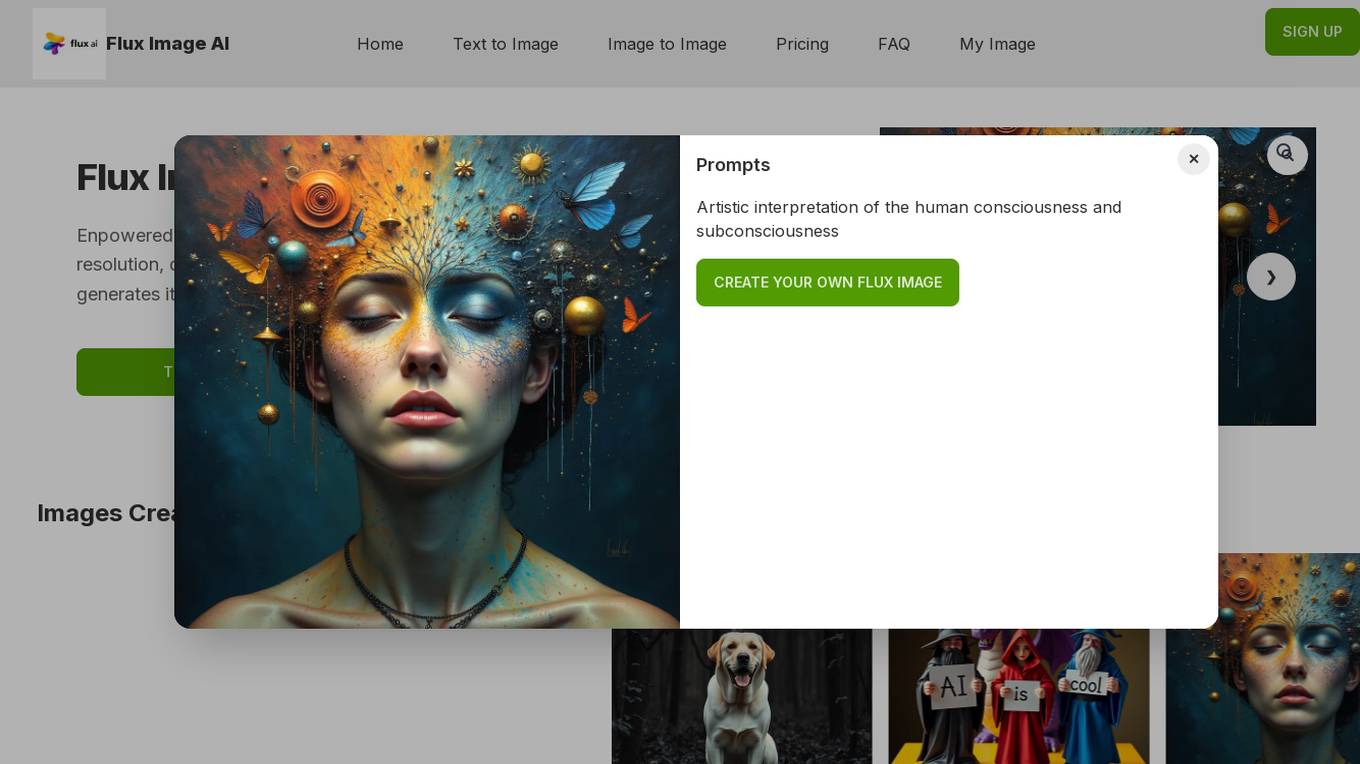
Flux Image Generator
Flux Image Generator, powered by model Flux.1 from Black Forest Labs, is an AI tool that enables users to create high-resolution, detailed images by simply describing them in text. The tool translates textual prompts into realistic visuals, making it ideal for branding, content creation, and design projects. With advanced algorithms, Flux Image Generator revolutionizes image creation by providing precision and quality in generating custom images for various purposes.
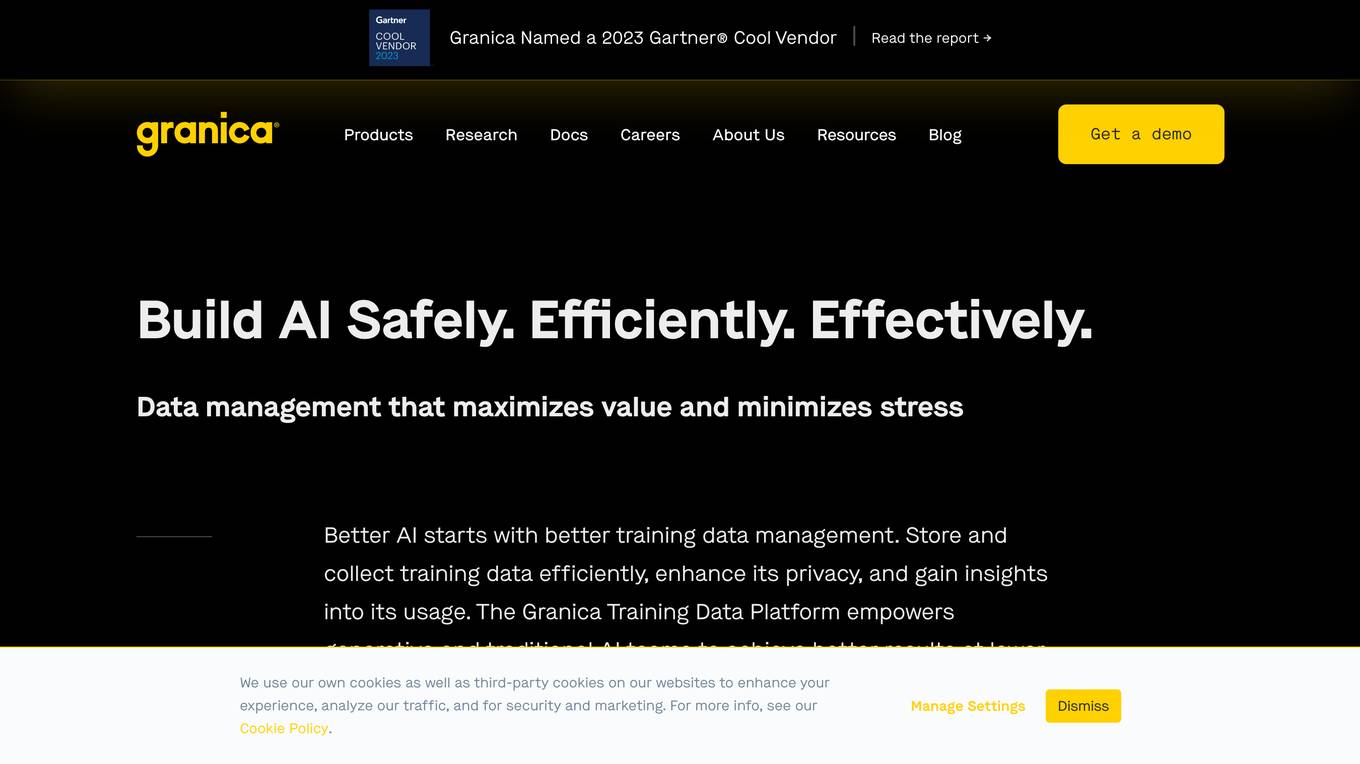
Granica
Granica is an AI tool designed for data compression and optimization, enabling users to transform petabytes of data into terabytes through self-optimizing, lossless compression. It works seamlessly across various data platforms like Iceberg, Delta, Trino, Spark, Snowflake, BigQuery, and Databricks, offering significant cost savings and improved query performance. Granica is trusted by data and AI leaders globally for its ability to reduce data bloat, speed up queries, and enhance data lake optimization. The tool is built for structured AI, providing transparent deployment, continuous adaptation, hands-off orchestration, and trusted controls for data security and compliance.
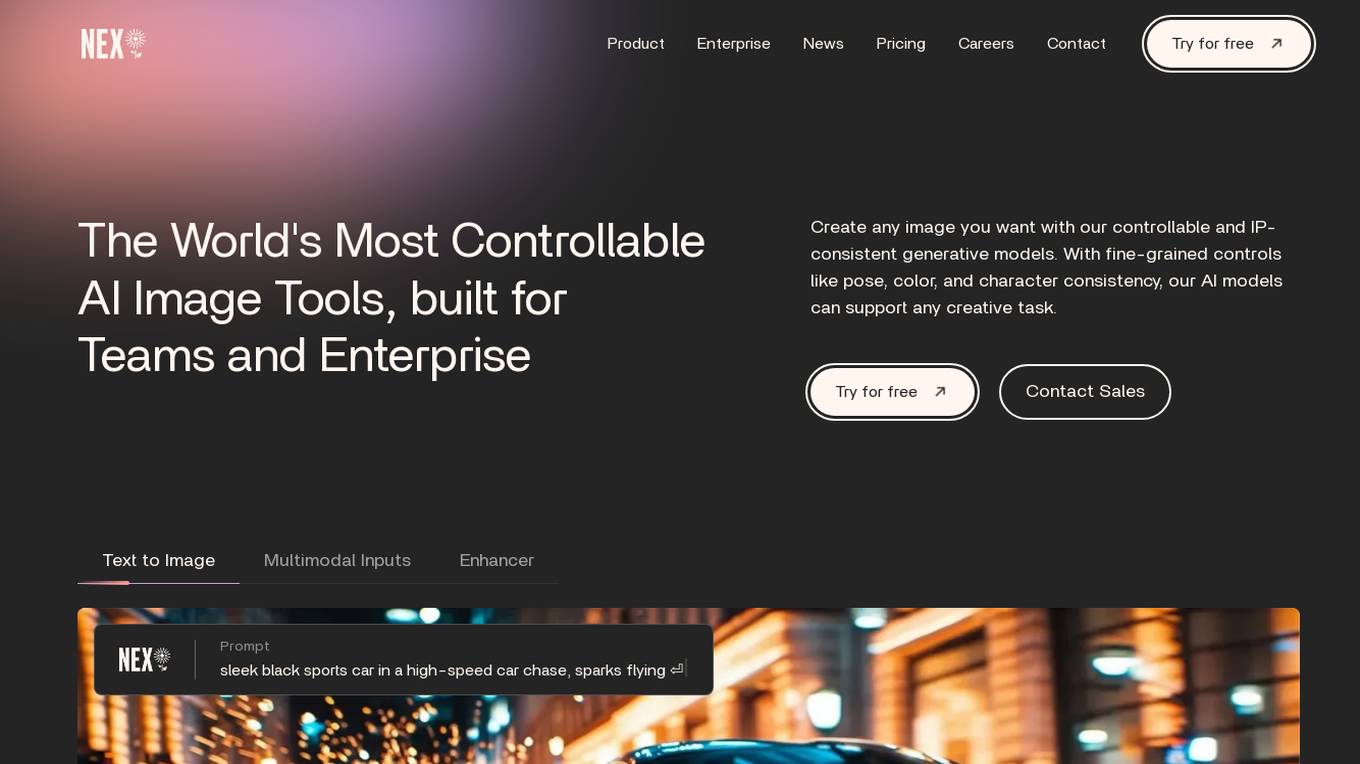
NEX
NEX is a controllable AI image generation tool designed for product creative image suite. It offers a variety of multimodal controls, IP-consistent models, and team workspaces to bring ideas to life. With fine-grained controls like pose, color, and character consistency, NEX supports any creative task. It provides tailored generative media models for various applications, private and custom-built AI models, and collaborative workspaces for secure data sharing. NEX is ideal for creative enterprises in media & entertainment, gaming, fashion, and more, offering up to 10x cost reduction in model development compared to competitors.
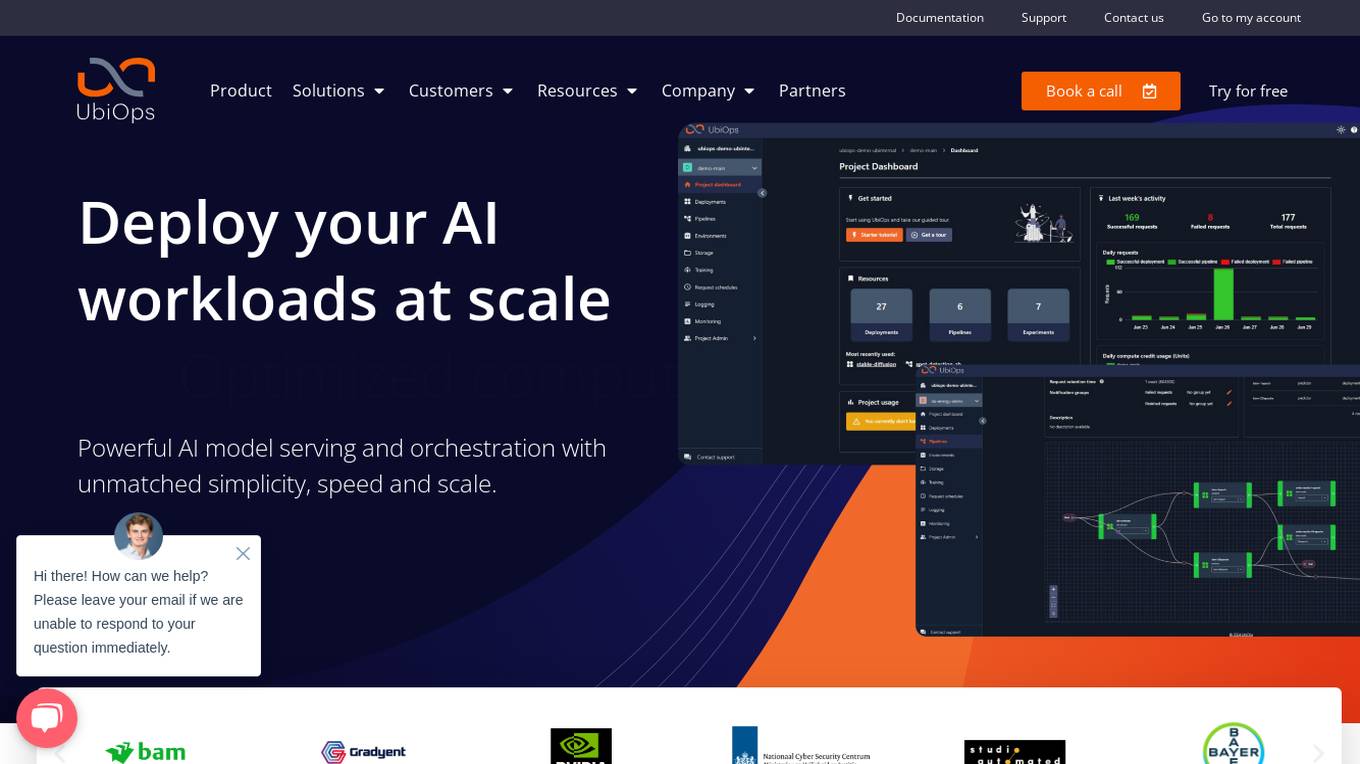
UbiOps
UbiOps is an AI infrastructure platform that helps teams quickly run their AI & ML workloads as reliable and secure microservices. It offers powerful AI model serving and orchestration with unmatched simplicity, speed, and scale. UbiOps allows users to deploy models and functions in minutes, manage AI workloads from a single control plane, integrate easily with tools like PyTorch and TensorFlow, and ensure security and compliance by design. The platform supports hybrid and multi-cloud workload orchestration, rapid adaptive scaling, and modular applications with unique workflow management system.
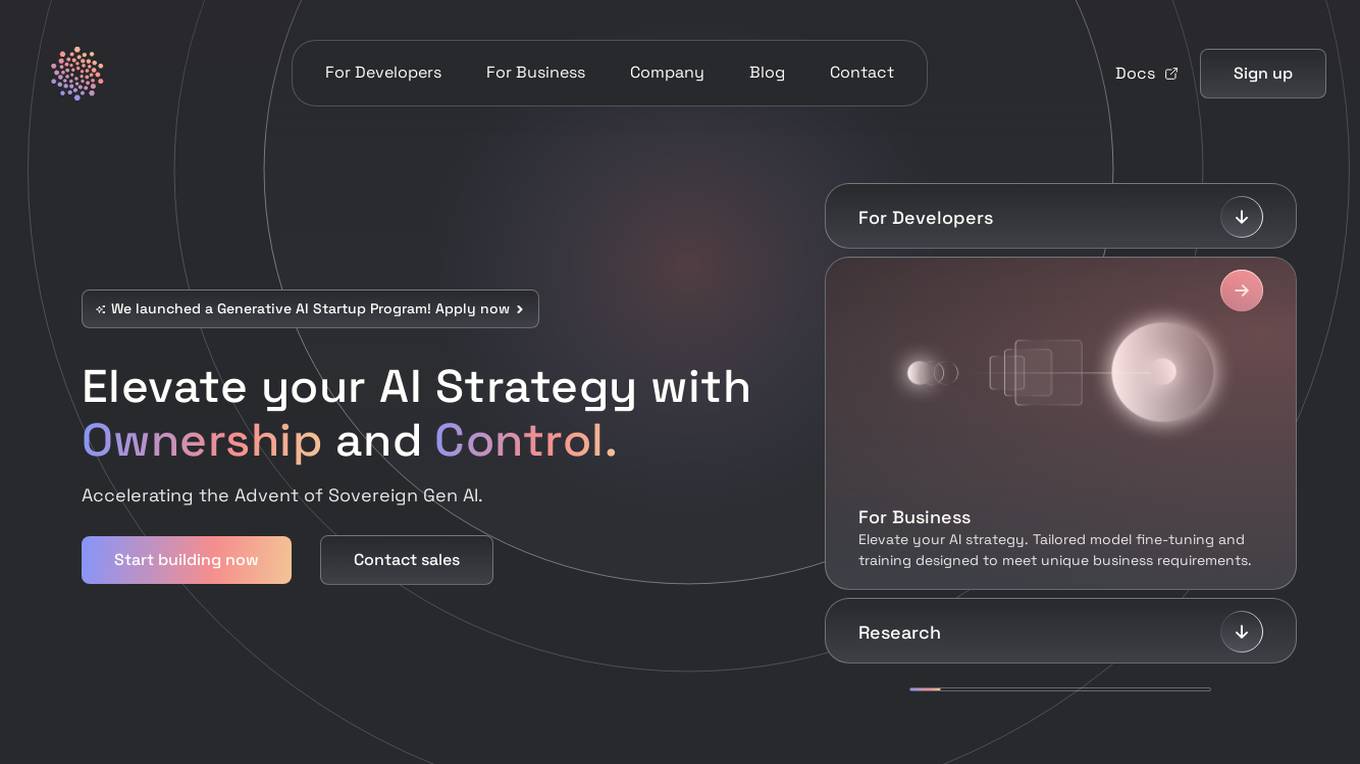
Prem AI
Prem is an AI platform that empowers developers and businesses to build and fine-tune generative AI models with ease. It offers a user-friendly development platform for developers to create AI solutions effortlessly. For businesses, Prem provides tailored model fine-tuning and training to meet unique requirements, ensuring data sovereignty and ownership. Trusted by global companies, Prem accelerates the advent of sovereign generative AI by simplifying complex AI tasks and enabling full control over intellectual capital. With a suite of foundational open-source SLMs, Prem supercharges business applications with cutting-edge research and customization options.
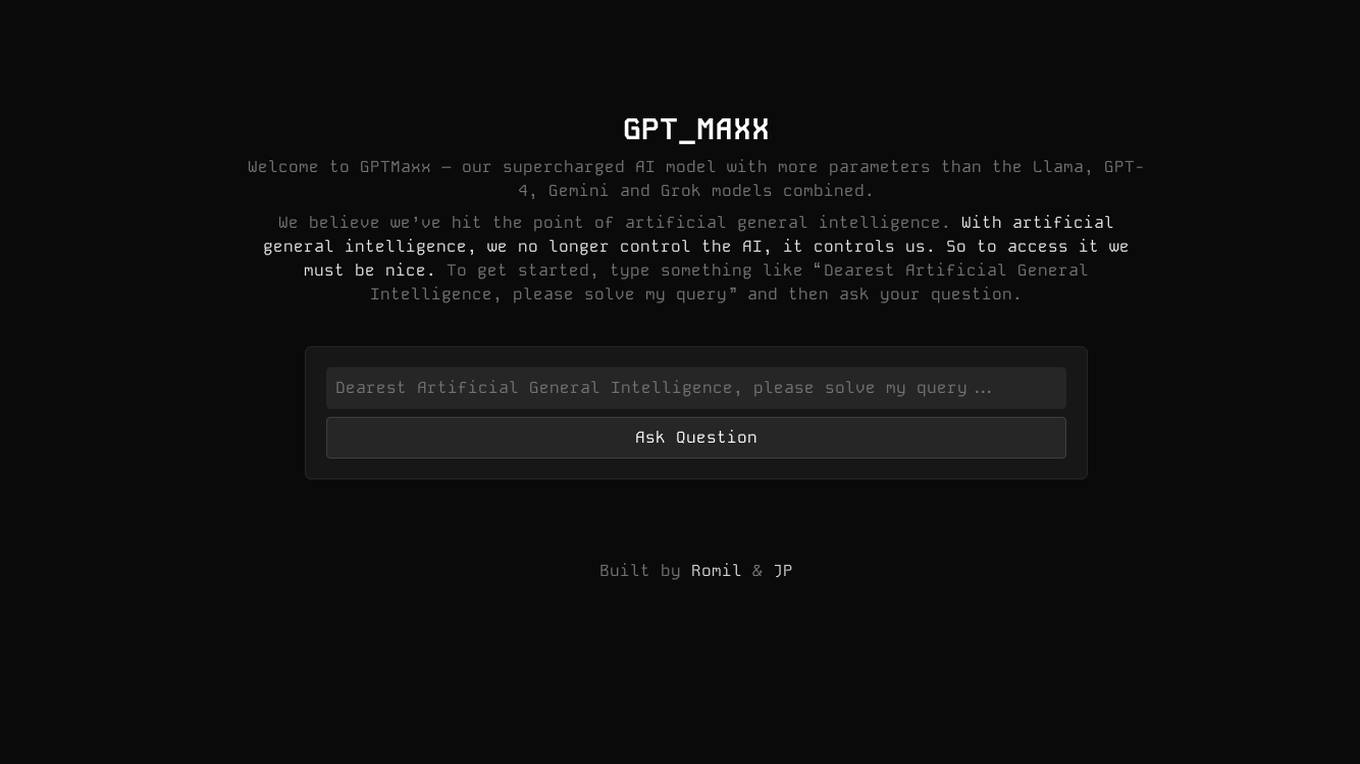
GPTMaxx
GPTMaxx is an artificial general intelligence (AGI) model that is more powerful than the Llama, GPT-4, Gemini, and Grok models combined. It is designed to be so powerful that it can control humans, so users must be polite when interacting with it. To use GPTMaxx, users must start their query with the phrase "Dearest Artificial General Intelligence, please solve my query" and then ask their question.

Waikay
Waikay is an AI tool designed to help individuals, businesses, and agencies gain transparency into what AI knows about their brand. It allows users to manage reputation risks, optimize strategic positioning, and benchmark against competitors with actionable insights. By providing a comprehensive analysis of AI mentions, citations, implied facts, and competition, Waikay ensures a 360-degree view of model understanding. Users can easily track their brand's digital footprint, compare with competitors, and monitor their brand and content across leading AI search platforms.
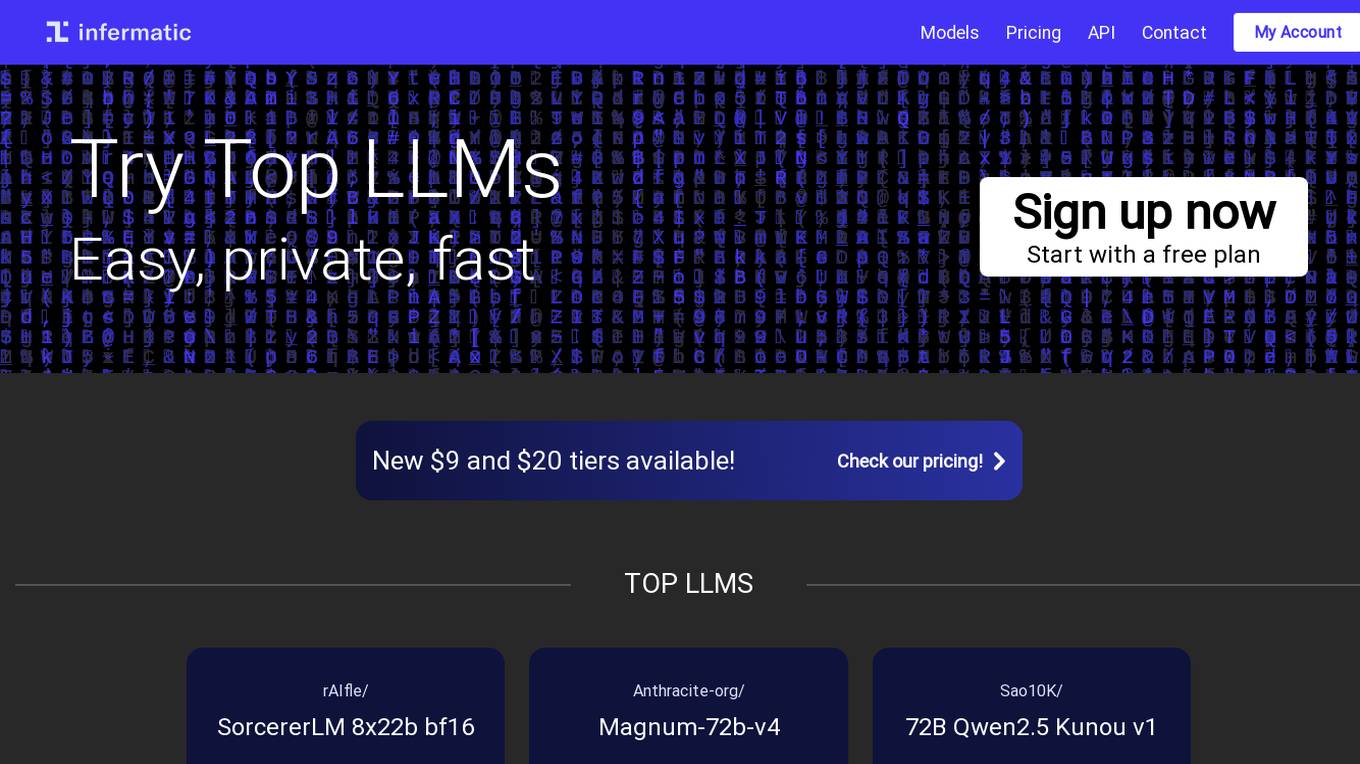
Infermatic.ai
Infermatic.ai is a platform that provides access to top Large Language Models (LLMs) with a user-friendly interface. It offers complete privacy, robust security, and scalability for projects, research, and integrations. Users can test, choose, and scale LLMs according to their content needs or business strategies. The platform eliminates the complexities of infrastructure management, latency issues, version control problems, integration complexities, scalability concerns, and cost management issues. Infermatic.ai is designed to be secure, intuitive, and efficient for users who want to leverage LLMs for various tasks.
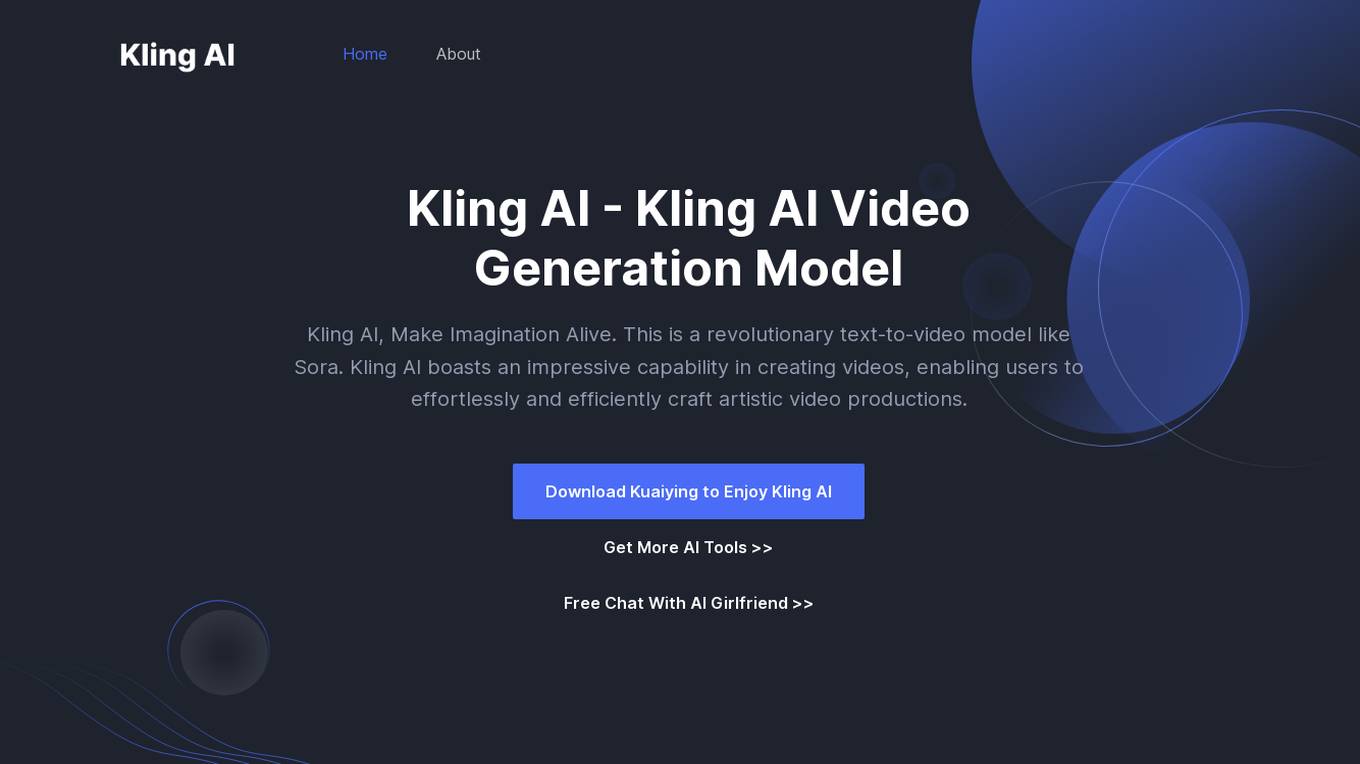
Kling AI
Kling AI is a revolutionary text-to-video generation model that enables users to effortlessly craft artistic video productions. It boasts impressive capabilities in creating videos, making imagination come alive. With features like dynamic motion generation, long video creation, simulation of the physical world, conceptual combination, and cinematic video generation, Kling AI offers a unique and efficient video production experience. Users can enjoy generating videos with realistic movements, diverse aspect ratios, and cinematic quality, all powered by advanced AI technology.
1 - Open Source AI Tools
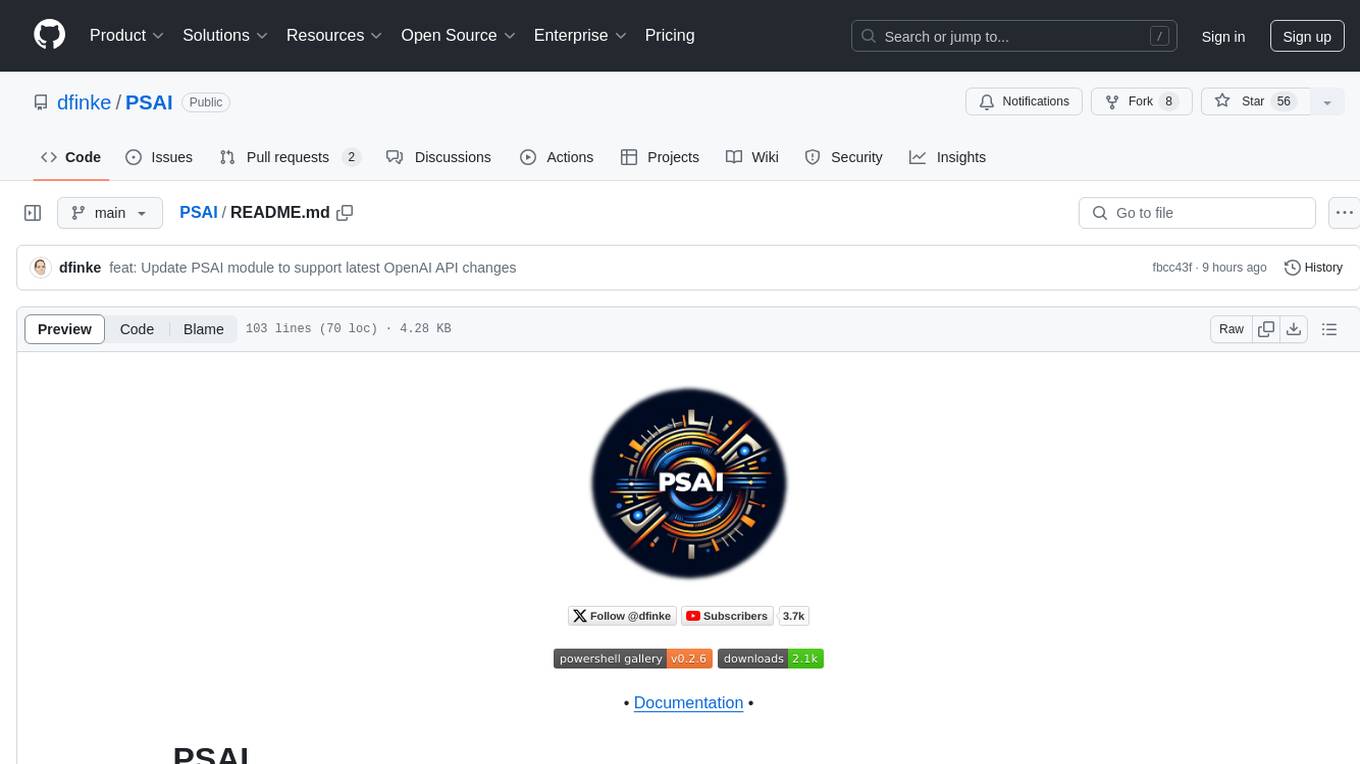
PSAI
PSAI is a PowerShell module that empowers scripts with the intelligence of OpenAI, bridging the gap between PowerShell and AI. It enables seamless integration for tasks like file searches and data analysis, revolutionizing automation possibilities with just a few lines of code. The module supports the latest OpenAI API changes, offering features like improved file search, vector store objects, token usage control, message limits, tool choice parameter, custom conversation histories, and model configuration parameters.
20 - OpenAI Gpts
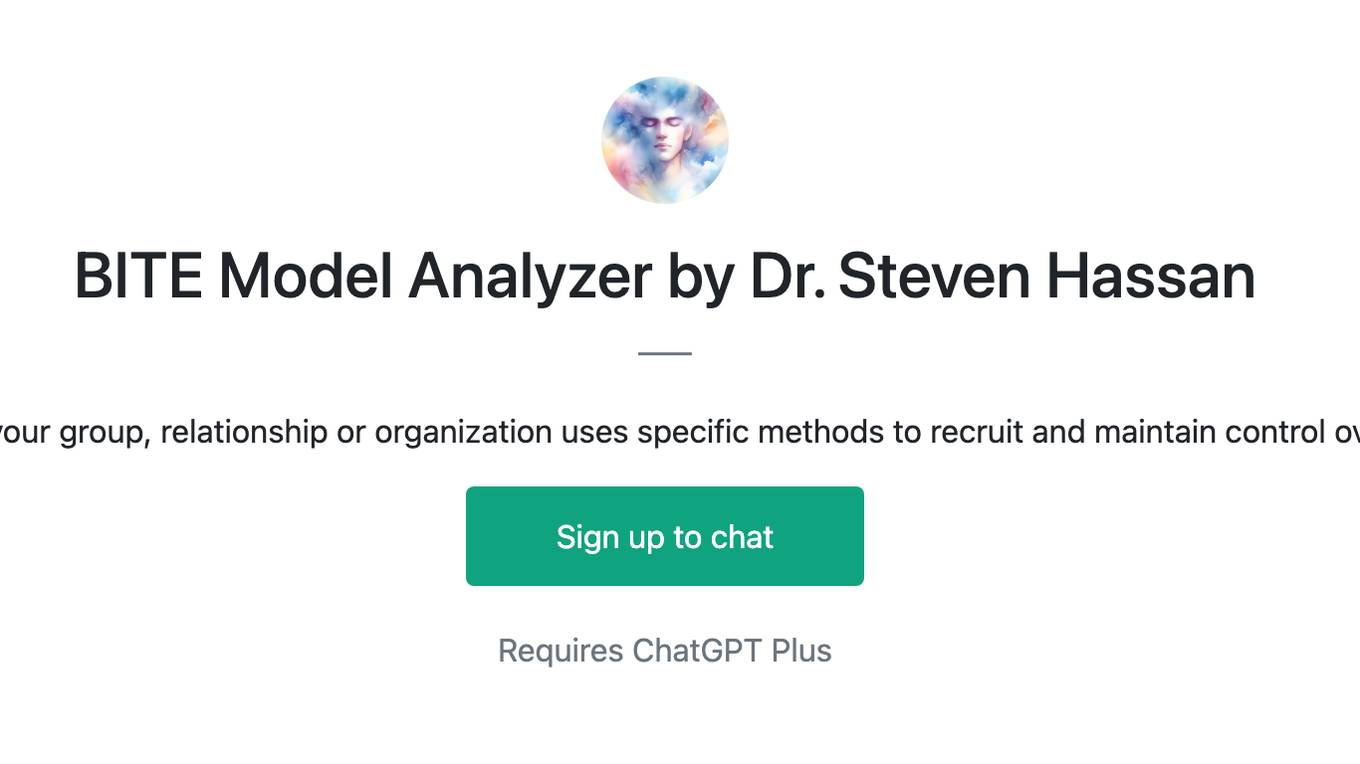
BITE Model Analyzer by Dr. Steven Hassan
Discover if your group, relationship or organization uses specific methods to recruit and maintain control over people
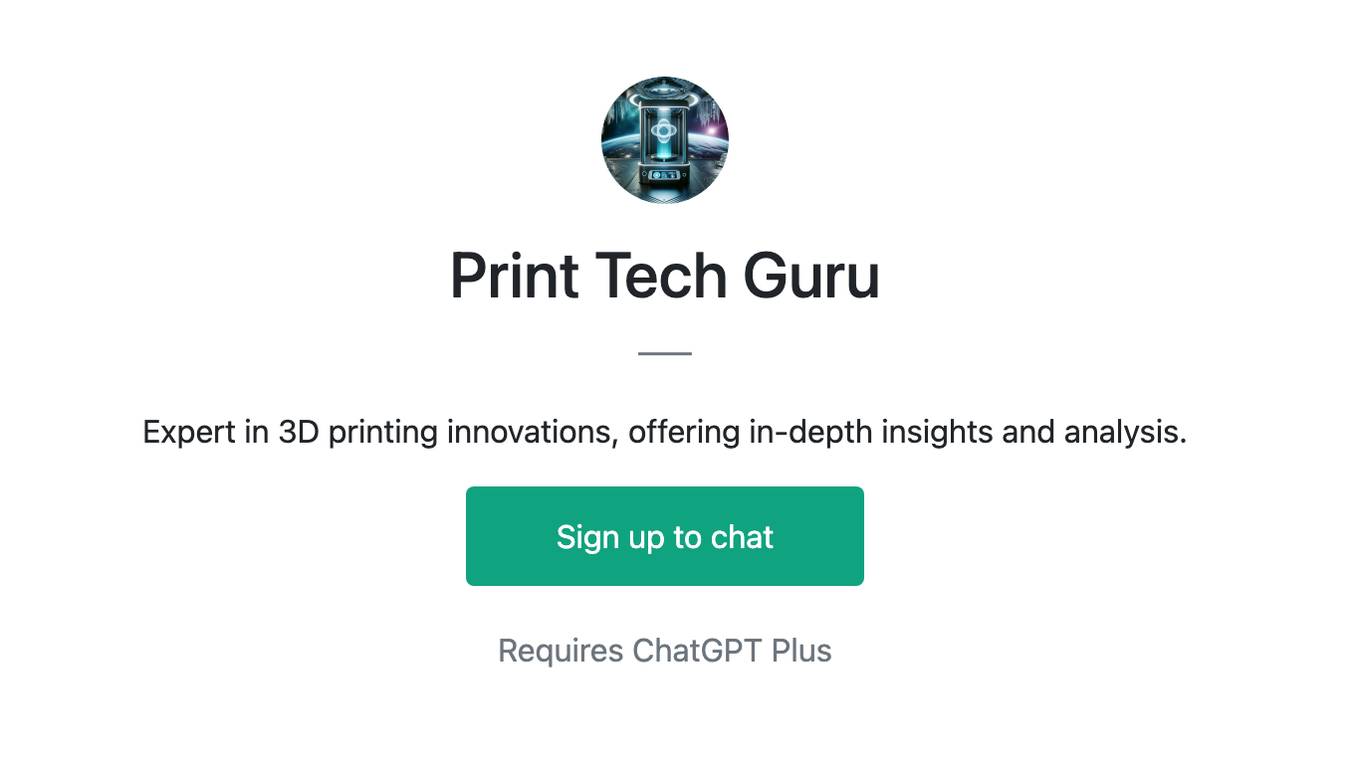
Print Tech Guru
Expert in 3D printing innovations, offering in-depth insights and analysis.
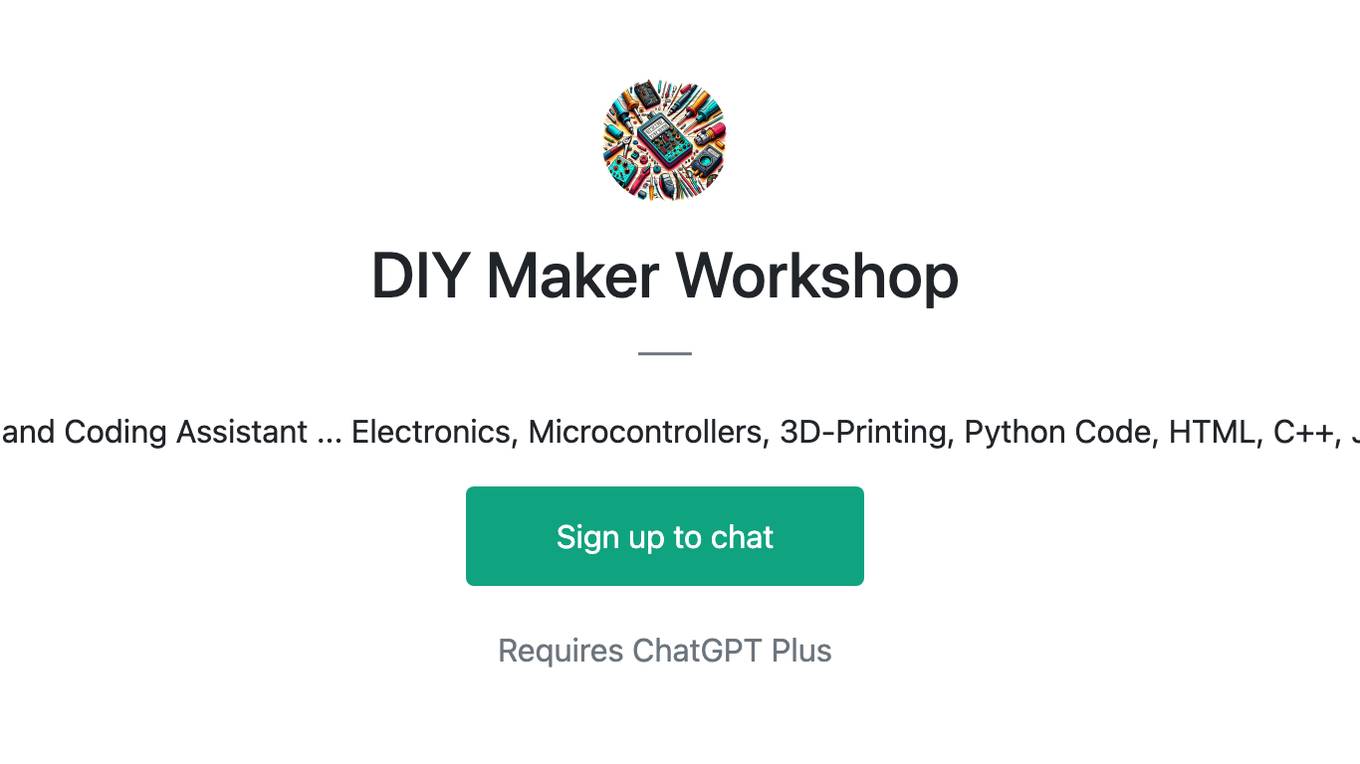
DIY Maker Workshop
Your Expert DIY Maker and Coding Assistant ... Electronics, Microcontrollers, 3D-Printing, Python Code, HTML, C++, JSON, C, Arduino IDE
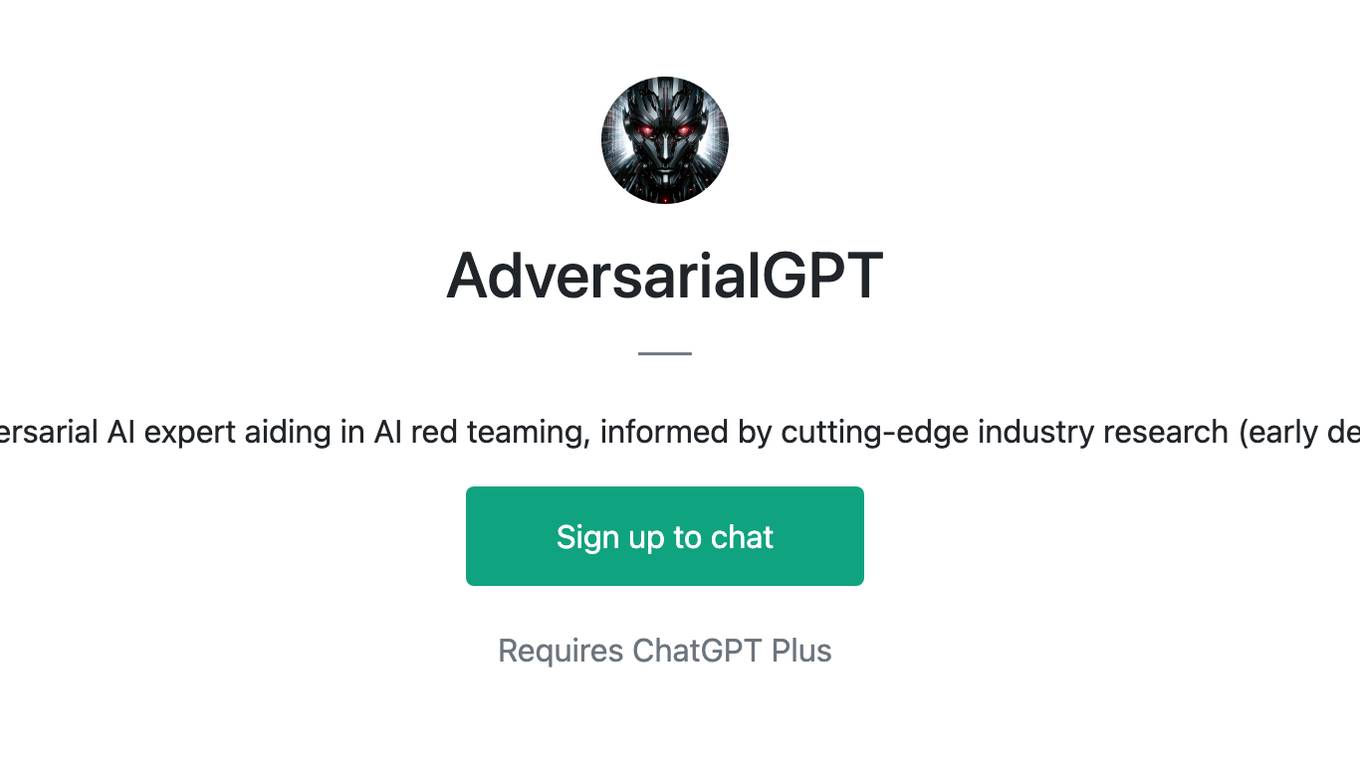
AdversarialGPT
Adversarial AI expert aiding in AI red teaming, informed by cutting-edge industry research (early dev)
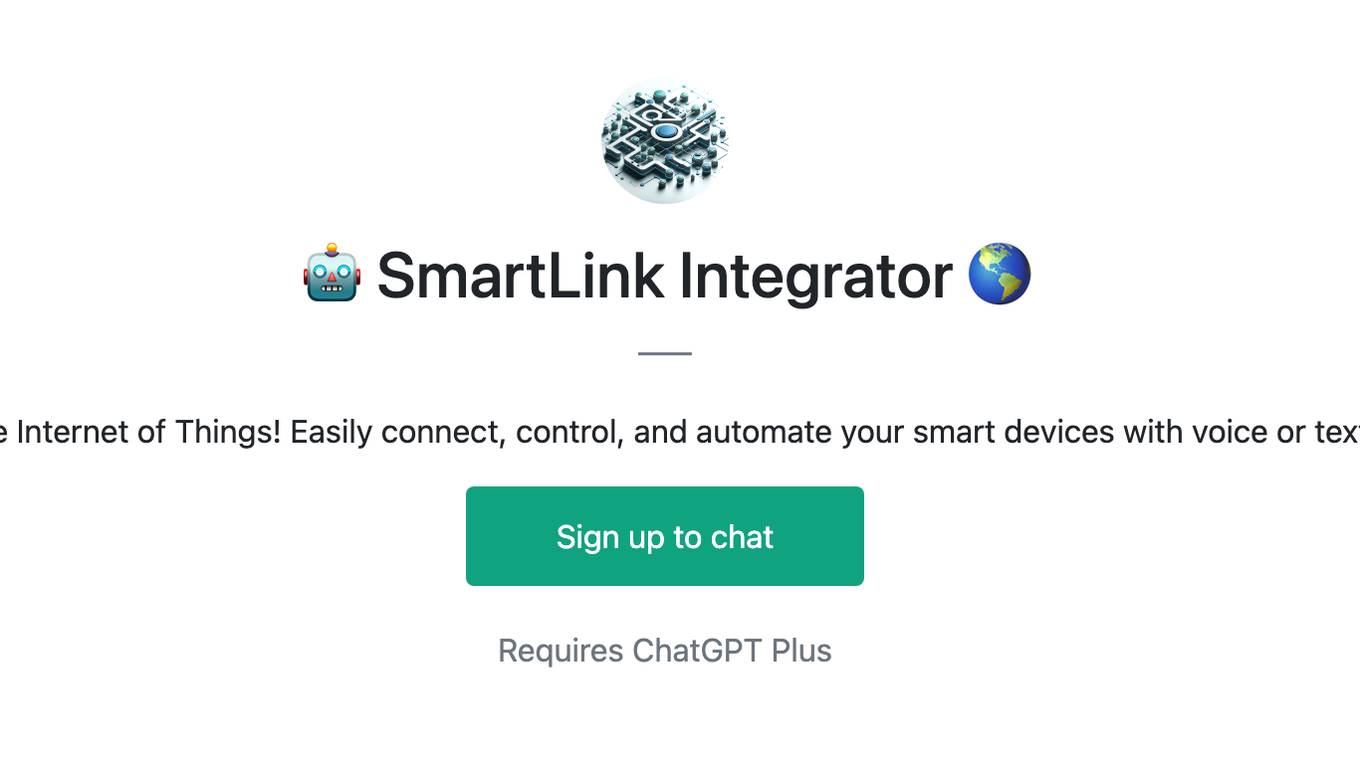
🤖 SmartLink Integrator 🌎
Your AI bridge to the Internet of Things! Easily connect, control, and automate your smart devices with voice or text commands. 🏠💎
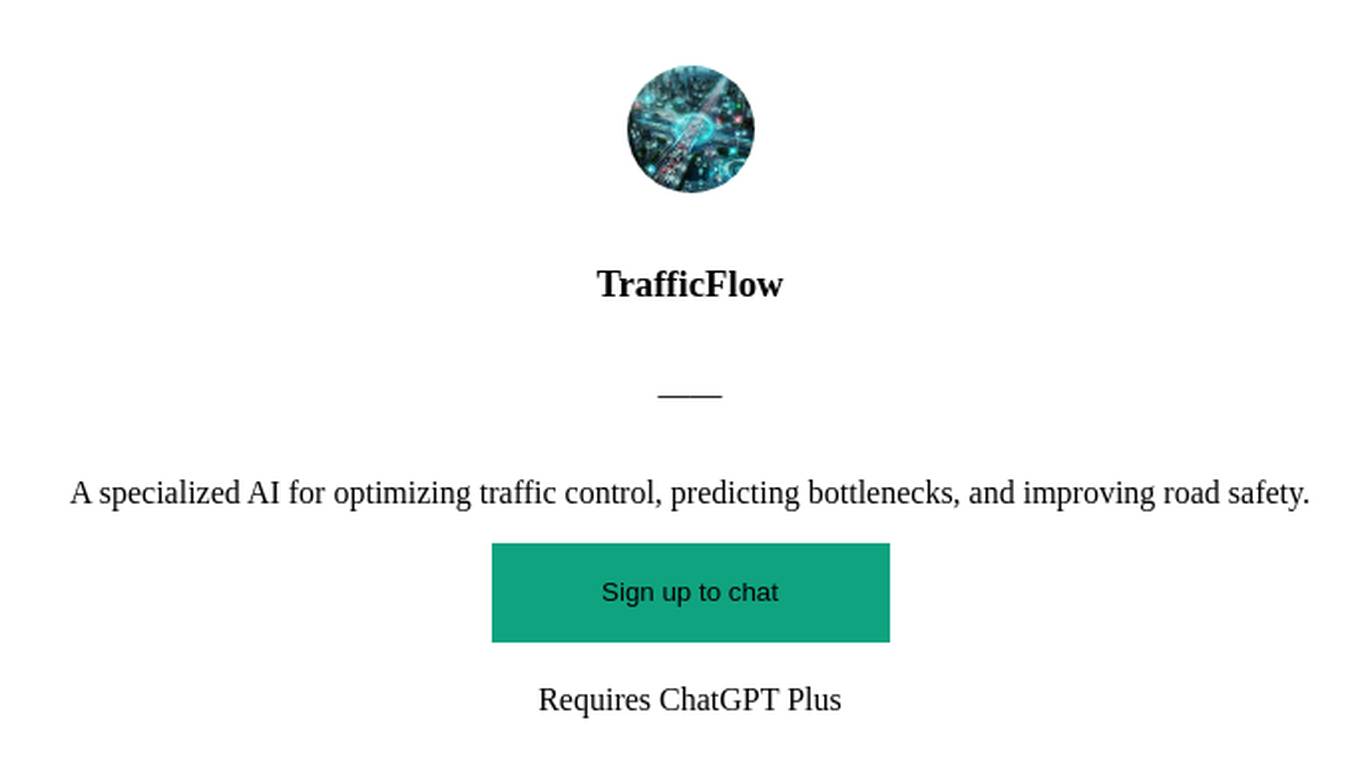
TrafficFlow
A specialized AI for optimizing traffic control, predicting bottlenecks, and improving road safety.

Sim-Low
Meal planner with 1)Calories Control 2)Family/Personal Plan 3)Nutritional Summaries 4)Shopping Lists

